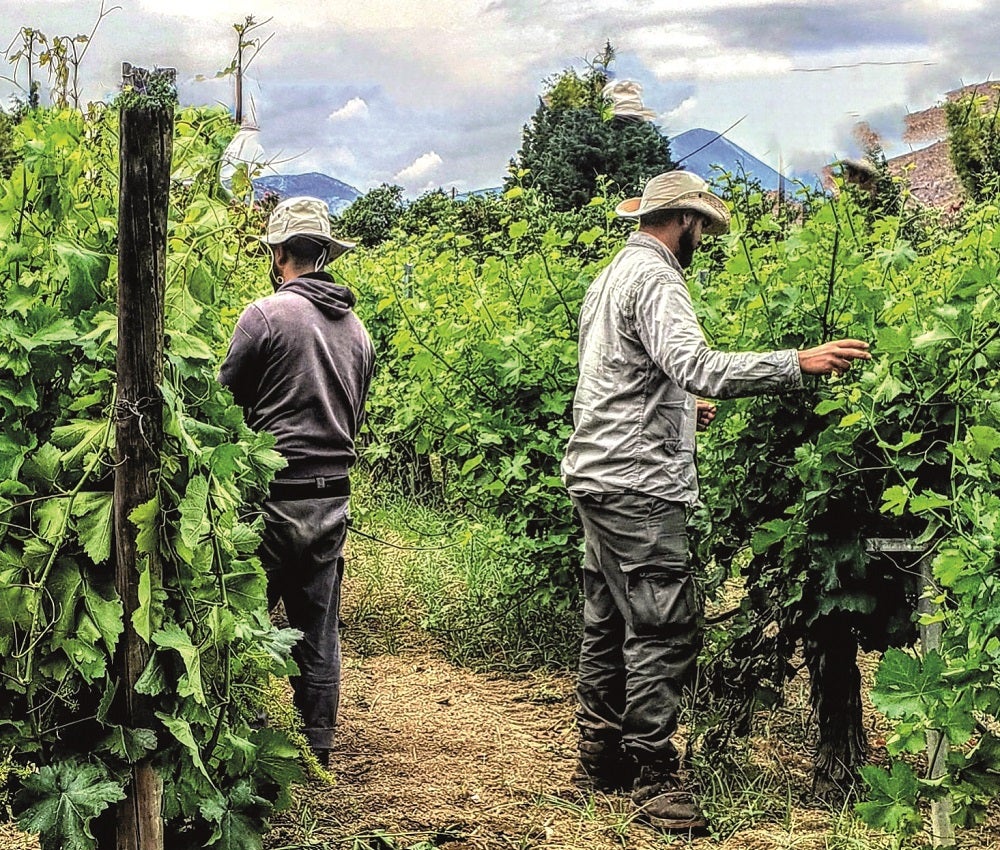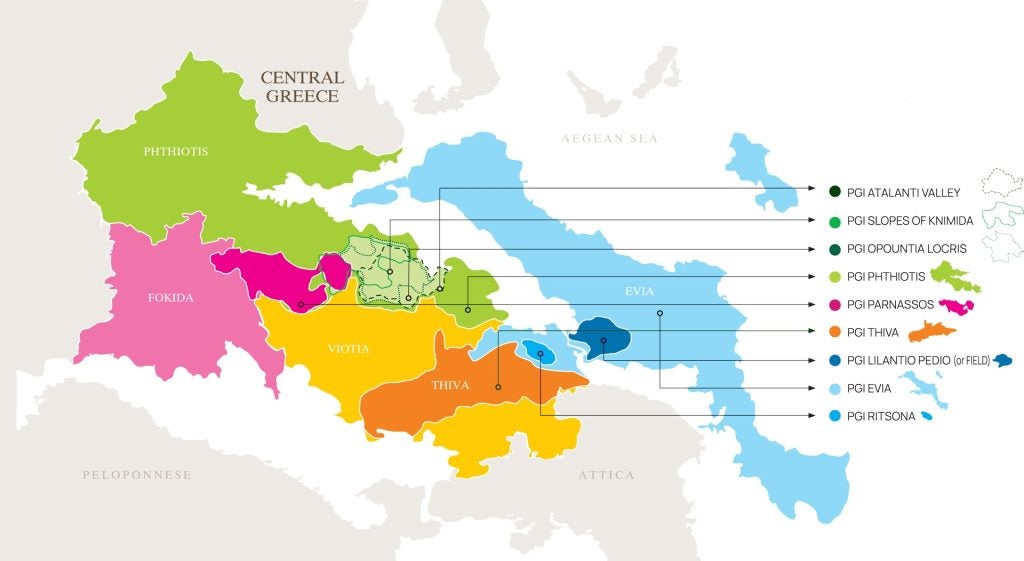
The picturesque region of Central Greece boasts a sunny climate, beautiful sloping vineyards, and a tradition of cultivating excellent wines for thousands of years. Central Greece is home to a number of skilled winemakers who are investing their knowledge into building an exciting future for Greek viticulture. Central Greece’s winemakers hope that their internationally available vintages share their love of Central Greece’s PGI wines along with the myths, ancient history, and exceptional quality they carry with them.

Greek wine has been experiencing a renaissance since the 1980s, with the emergence of a new wave of winemakers. Global interest in Greek wines is continuing to grow, due to its many intriguing grape varieties and the production of wines with real local character from a variety of traditional and modern techniques. Having old vines of Central Greece offers the benefit of good quality grapes, resulting in better quality wines. The region produces diverse wines, ranging from Xinomavro and Agiorgitiko to Krasato, Stavroto, Limniona, Vradiano, Cabernet Sauvignon, Merlot, and Syrah.
Wine producers are investing in the exploration of new terroirs found around the region as well as reviving forgotten local grape varieties. The combination of unique mesoclimates, successful vineyard management, promising rare varieties and skilled and dedicated winemakers has become a game changer for the reputation and development of Central Greece’s wine identity. The range of styles of the wines produced is the most diverse in Greece: whites can range from light, easy-to-drink wines, to savoury and complex. Reds extend from fruity, mellow reds to sophisticated, pure expressions of terroir. The region’s rosè wines are refreshing and aromatic, perfect for the Mediterranean summer.
Central Greece is the country’s largest geographical region. It includes the southern part of the Greek mainland as well as the island of Evia to the East. Central Greece is located to the north of the Peloponnese and to the south of Thessaly and Epirus, bordering the Aegean Sea to the east, the Ionian Sea to the west and the Corinthian Gulf to the south. Its climate is temperate along its coastlines and dry in the interior. The region is amongst the most mountainous regions of the country, occupying 59% of the surface. Semi-mountainous land makes up 19%, while the remaining 22% lies on plains (most of them in the Eastern part of the region). More than 21,000 hectares are under vine, which accounts for 28% of the total Greek vineyard.

The region of Central Greece is on the Eastern side of the Pindus and Agrafa mountains, which divide mainland Greece all the way down to Athens. This area is more arid than Northern Greece, with a climate somewhat similar to Napa Valley or parts of Sonoma near Mount Olympus (an area for reds). It is also much hotter and drier in the South. The region boasts nine distinct Protected Geographical Indication (PGI) wine zones; PGI Atalanti Valley, PGI Slopes of Knimida, PGI Opountia Locris, PGI Phthiotis, PGI Parnassos, PGI Thiva, PGI Lilantio Pedio, PGI Evia and PGI Ritsona.
The climate is Mediterranean, with heavy continental influence from the extensive mountain summits that can exceed 2,000m in elevation. Central Greece is home to five of Greece’s biggest lakes and, together with the rivers running through the mountains, they create a number of unique mesoclimates between the mountain masses.
The hotter and more arid climates of the south grow more white wine, including Savatiano. The historical white grape variety of Savatiano (PGI Evia, PGI Thiva, PGI Atalanti Valley), is among the Greek vineyard’s most widely planted varieties. Whether on its own, as part of blends, or as part of many PGI wines, the variety is responsible for a considerable volume of the dry whites produced. When made well, Savatiano offers flavours of sweet honeydew, green apple, and lime with tingling acidity, akin to Chablis. When oak-aged, Savatiano delivers more lemon curd, wax, and cultured cream with lemon bread notes and a creamy mid-palate structure and finish similar to Burgundy. Savatiano is a surprising discovery from a grape that has long been considered the doldrums of Greek wine.
Another variety, Xinomavro (PGI Opountia Locris) surprises with its performance and multi-faceted personality, yielding ‘vin de garde’ reds, dynamic rosés, aromatic sparkling wines, and even idiosyncratic sweet wines. The essence of the Xinomavro character can be found in the complex, distinct aromas of red fruits, flowers, tomatoes, olives, dried prunes, tobacco and nuts, while wood-ageing becomes evident in the subtle hints of spices.
The red wines from the South made of Xinomavro and international grapes tend to offer more stewed fruit. The regional Vradiano evokes tasty ripe strawberry, black pepper, and hibiscus notes contrasting with mouth-drying, choppy tannins.
Central Greece presents many different options for wine lovers, with a range of red, white and rose wines ideal for everything from easy sipping to fuller-flavoured tipples.
Links:
Website: https://www.winesofcentralgreece.com/
Facebook: https://www.facebook.com/centralgreecewines
Instagram: https://www.instagram.com/wines_of_central_greece/
LinkedIn: https://www.linkedin.com/company/wines-of-central-greece/




